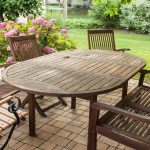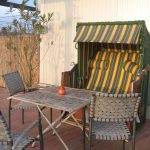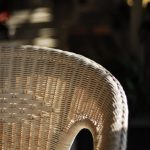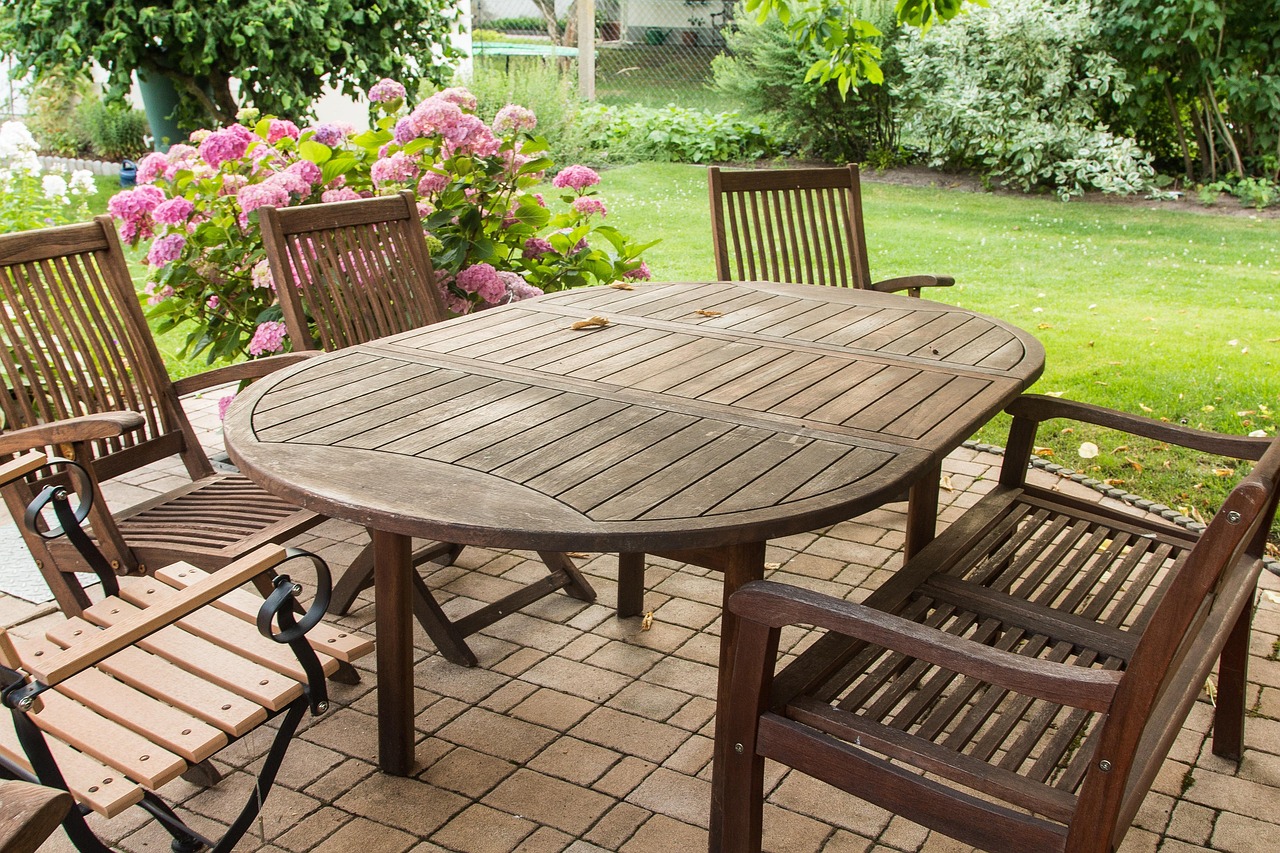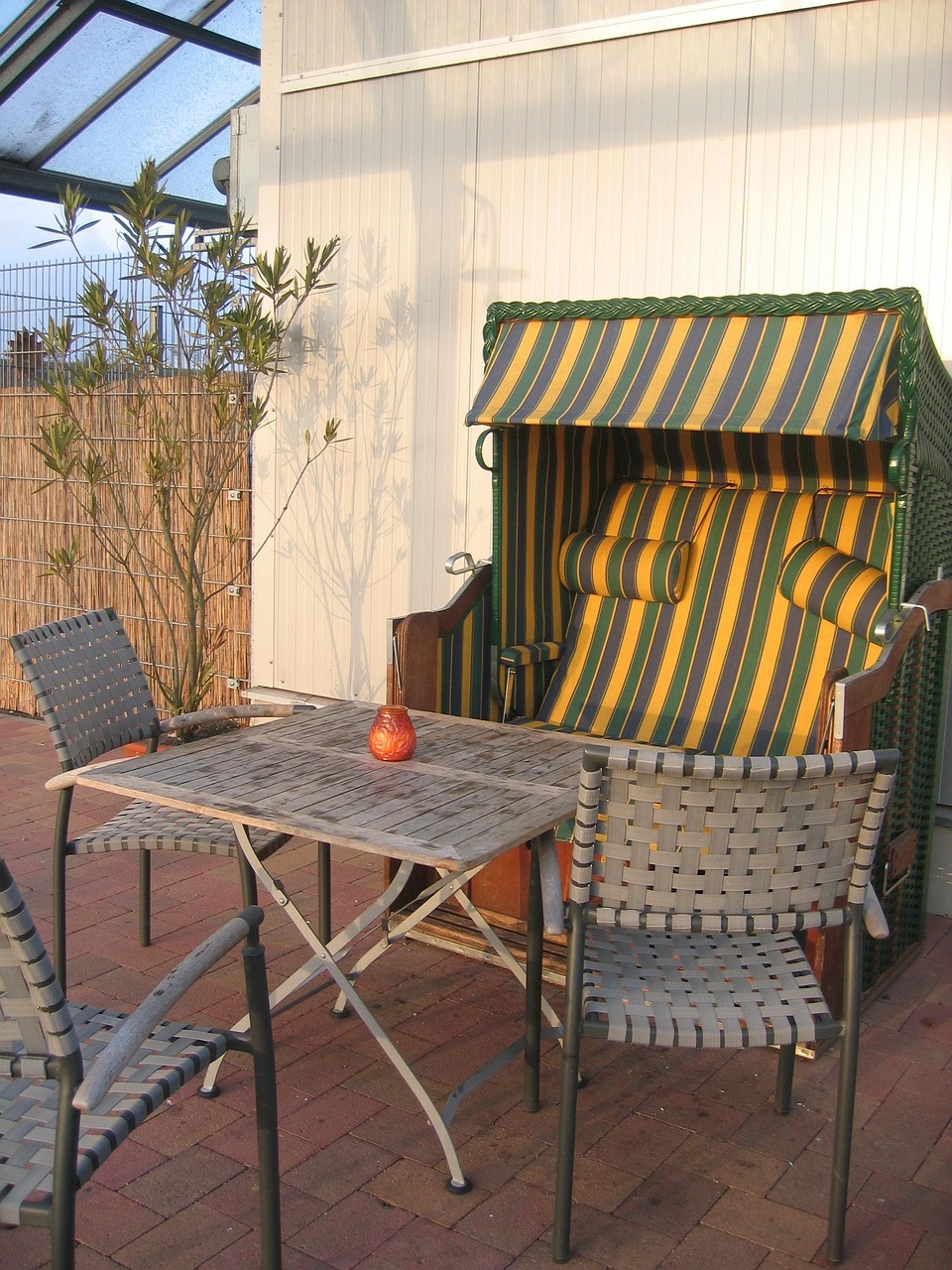Outdoor Fabric Technology: The Venus Cushion Story
The Evolution of Outdoor Fabrics
Early Beginnings
The journey of outdoor fabrics began with natural materials. Early outdoor enthusiasts relied on heavy, durable fabrics like canvas and wool. These materials, while robust, were not particularly weather-resistant. Canvas, made from cotton or linen, was often treated with oils or waxes to improve its water resistance. Wool, known for its insulating properties, was favored for its ability to retain warmth even when wet. However, these materials were heavy and cumbersome, limiting their practicality for outdoor use.
The Advent of Synthetic Fabrics
The mid-20th century marked a significant shift with the introduction of synthetic fibers. Nylon and polyester emerged as game-changers in the outdoor fabric industry. These materials offered a lightweight alternative to traditional fabrics, with enhanced durability and resistance to environmental factors. Nylon, initially developed for military use, became popular for its strength and elasticity. Polyester, known for its resistance to stretching and shrinking, provided a versatile option for various outdoor applications. These synthetic fabrics allowed for greater freedom of movement and improved comfort, revolutionizing outdoor gear and apparel.
Technological Advancements
The late 20th and early 21st centuries saw rapid advancements in fabric technology. Innovations such as Gore-Tex and other breathable, waterproof membranes transformed outdoor fabrics. These technologies allowed for the creation of materials that could repel water while allowing moisture vapor to escape, keeping users dry and comfortable. The development of UV-resistant fabrics also became crucial, offering protection from harmful sun exposure. These advancements not only enhanced the functionality of outdoor fabrics but also expanded their applications, from clothing to tents and backpacks.
Sustainable Innovations
In recent years, the focus has shifted towards sustainability in outdoor fabric technology. The industry has seen a rise in the use of recycled materials and eco-friendly production processes. Companies are exploring biodegradable fabrics and natural dyes to reduce environmental impact. Innovations such as PFC-free water repellents and organic cotton blends are gaining popularity, reflecting a growing consumer demand for sustainable options. This shift towards sustainability is driving further innovation, as manufacturers seek to balance performance with environmental responsibility.
The Role of Nanotechnology
Nanotechnology has emerged as a frontier in outdoor fabric innovation. By manipulating materials at the molecular level, manufacturers can enhance fabric properties such as water resistance, stain repellency, and durability. Nanocoatings can create ultra-thin protective layers, making fabrics more resilient to wear and tear. This technology is paving the way for the next generation of outdoor fabrics, offering unprecedented levels of performance and protection.
The Future of Outdoor Fabrics
The evolution of outdoor fabrics is an ongoing journey, with new technologies and materials continually reshaping the landscape. As consumer demands evolve, the industry is poised to explore new frontiers, from smart fabrics with integrated technology to advanced composites that offer unparalleled strength and flexibility. The future of outdoor fabrics promises to be as dynamic and innovative as its past, driven by a commitment to enhancing the outdoor experience while addressing the challenges of a changing world.
The Birth of the Venus Cushion: Concept and Design
Inspiration and Market Need
The Venus Cushion was conceived from a growing demand for outdoor furniture that could withstand the elements while providing comfort and style. Designers observed a gap in the market for cushions that were not only durable but also aesthetically pleasing and environmentally friendly. This need was further emphasized by consumer feedback, which highlighted the desire for products that could seamlessly transition from indoor to outdoor settings without compromising on quality or appearance.
Initial Design Concepts
The initial design phase focused on creating a cushion that was both functional and visually appealing. Designers explored various shapes, sizes, and patterns to ensure versatility and adaptability to different outdoor settings. The concept revolved around a minimalist design that could complement a wide range of outdoor furniture styles, from modern to traditional. The team also prioritized ergonomics, ensuring that the cushion provided optimal support and comfort for extended periods of use.
Material Selection
Material selection was a critical aspect of the Venus Cushion’s design process. The team sought out innovative fabrics that offered durability, water resistance, and UV protection. They experimented with various textile technologies, including advanced weaves and coatings, to enhance the cushion’s performance in outdoor environments. The chosen materials needed to be not only resilient but also sustainable, aligning with the growing consumer demand for eco-friendly products.
Prototyping and Testing
Prototyping played a crucial role in refining the Venus Cushion’s design. Multiple prototypes were developed to test different fabric combinations, cushion densities, and stitching techniques. These prototypes underwent rigorous testing to assess their performance under various weather conditions, including exposure to sunlight, rain, and temperature fluctuations. Feedback from these tests informed further design adjustments, ensuring the final product met the highest standards of quality and durability.
Collaboration and Innovation
The development of the Venus Cushion was a collaborative effort involving designers, material scientists, and industry experts. This multidisciplinary approach fostered innovation, allowing the team to integrate cutting-edge fabric technologies and design principles. The collaboration also extended to partnerships with textile manufacturers, who provided insights into the latest advancements in outdoor fabric technology. This synergy was instrumental in bringing the Venus Cushion from concept to reality, setting a new benchmark for excellence in outdoor fabric design.
Material Science Breakthroughs: The Core of Innovation
Advanced Polymer Development
The development of advanced polymers has been a cornerstone in the evolution of outdoor fabric technology. These polymers are engineered to provide superior durability, flexibility, and resistance to environmental stressors. Innovations in polymer chemistry have led to the creation of materials that can withstand extreme temperatures, UV radiation, and moisture, making them ideal for outdoor applications. The Venus Cushion utilizes these advanced polymers to ensure longevity and performance in diverse weather conditions.
Nanotechnology Integration
Nanotechnology has revolutionized the way materials are designed and utilized in outdoor fabrics. By manipulating materials at the molecular level, scientists have been able to enhance the properties of fabrics significantly. The integration of nanoparticles into the fabric of the Venus Cushion has resulted in improved stain resistance, increased strength, and enhanced thermal regulation. This technology allows the cushion to maintain its appearance and functionality over time, even with frequent use.
Sustainable Material Innovations
Sustainability is a critical focus in modern material science, and innovations in this area have greatly influenced the design of the Venus Cushion. Researchers have developed eco-friendly materials that reduce environmental impact without compromising on quality or performance. The use of recycled fibers and biodegradable components in the cushion’s construction reflects a commitment to sustainability. These materials not only contribute to environmental conservation but also offer unique properties such as breathability and comfort.
Smart Fabric Technologies
The advent of smart fabric technologies has introduced a new dimension to outdoor fabric innovation. These fabrics are embedded with sensors and conductive fibers that can monitor environmental conditions and user interactions. The Venus Cushion incorporates smart fabric elements that allow it to adapt to changes in temperature and humidity, providing optimal comfort. This technology also enables the cushion to communicate with other smart devices, offering users a seamless and interactive experience.
Enhanced Coating Techniques
Coating techniques have advanced significantly, providing outdoor fabrics with additional layers of protection and functionality. The Venus Cushion benefits from state-of-the-art coatings that enhance water repellency, UV protection, and antimicrobial properties. These coatings are applied using precision techniques that ensure uniform coverage and long-lasting effectiveness. The result is a cushion that remains clean, dry, and hygienic, even in challenging outdoor environments.
Weather Resistance: Adapting to Nature’s Challenges
Understanding Weather Resistance in Outdoor Fabrics
Weather resistance in outdoor fabrics is a critical factor that determines the durability and longevity of products like the Venus Cushion. This characteristic ensures that the fabric can withstand various environmental conditions, including rain, wind, sun, and temperature fluctuations. The ability to resist these elements is essential for maintaining the aesthetic and functional qualities of outdoor cushions.
Technological Innovations in Weather-Resistant Fabrics
Water Repellency and Waterproofing
One of the primary challenges in outdoor fabric technology is achieving effective water repellency and waterproofing. Advanced treatments and coatings, such as DWR (Durable Water Repellent) finishes, are applied to fabrics to create a barrier against moisture. These treatments prevent water from penetrating the fabric, allowing it to bead up and roll off the surface. The Venus Cushion utilizes cutting-edge waterproofing technologies to ensure that it remains dry and comfortable even during heavy rain.
UV Protection
Prolonged exposure to sunlight can cause fabrics to fade and degrade over time. To combat this, outdoor fabrics are often treated with UV inhibitors that protect against the harmful effects of ultraviolet rays. The Venus Cushion incorporates UV-resistant materials that help maintain its vibrant colors and structural integrity, even after extended sun exposure.
Wind Resistance
Wind can be a significant challenge for outdoor cushions, as it can cause them to shift or blow away. The Venus Cushion addresses this issue through innovative design features, such as weighted corners or attachment systems, that enhance stability and keep the cushion securely in place during windy conditions.
Material Selection and Fabric Engineering
The choice of materials plays a crucial role in the weather resistance of outdoor fabrics. High-performance synthetic fibers, such as solution-dyed acrylics and polyester, are commonly used due to their inherent resistance to moisture, UV rays, and mildew. The Venus Cushion is crafted from these advanced materials, ensuring that it can withstand the rigors of outdoor use.
Testing and Quality Assurance
To guarantee weather resistance, outdoor fabrics undergo rigorous testing and quality assurance processes. These tests simulate various environmental conditions to assess the fabric’s performance in real-world scenarios. The Venus Cushion is subjected to extensive testing, including water resistance, UV exposure, and abrasion tests, to ensure it meets the highest standards of durability and weather resistance.
Environmental Considerations
As the demand for sustainable products grows, the development of eco-friendly weather-resistant fabrics has become increasingly important. The Venus Cushion incorporates environmentally conscious materials and manufacturing processes, reducing its ecological footprint while maintaining exceptional weather resistance. This commitment to sustainability is a key aspect of the cushion’s journey to excellence in outdoor fabric technology.
Comfort and Aesthetics: Balancing Functionality with Style
The Importance of Comfort in Outdoor Fabrics
Comfort is a critical factor in outdoor fabric technology, especially for products like the Venus Cushion. The fabric must provide a pleasant tactile experience, ensuring that users can relax and enjoy their outdoor spaces without discomfort. This involves selecting materials that are soft to the touch yet durable enough to withstand the elements. The Venus Cushion achieves this by using advanced textile engineering to create a fabric that feels luxurious while maintaining its resilience against weather conditions.
Innovative Materials for Enhanced Comfort
The development of innovative materials has been pivotal in enhancing comfort. The Venus Cushion incorporates memory foam technology, which adapts to the user’s body shape, providing personalized support and reducing pressure points. This innovation not only enhances comfort but also contributes to the overall ergonomic design of the cushion, making it suitable for prolonged use.
Aesthetic Appeal: Designing for Style
Aesthetics play a significant role in the appeal of outdoor fabrics. The Venus Cushion is designed with a keen eye for style, ensuring that it complements various outdoor settings. The choice of colors, patterns, and textures is carefully curated to align with contemporary design trends, allowing users to express their personal style while enjoying the functional benefits of the cushion.
The Role of Color and Pattern
Color and pattern are essential elements in the aesthetic design of outdoor fabrics. The Venus Cushion offers a range of vibrant and subtle hues, catering to diverse preferences and outdoor themes. Patterns are selected to add visual interest and can range from classic stripes to modern geometric designs, providing options that suit different tastes and environments.
Durability Meets Design
Balancing durability with design is a challenge that the Venus Cushion addresses through the use of high-performance fabrics. These fabrics are engineered to resist fading, staining, and mildew, ensuring that the cushion maintains its aesthetic appeal over time. The integration of UV-resistant technology further protects the fabric from sun damage, preserving its color and texture.
Customization and Personalization
The Venus Cushion offers customization options, allowing users to personalize their outdoor spaces. This includes the ability to choose from various fabric types, colors, and patterns, enabling a tailored approach to outdoor decor. Customization not only enhances the aesthetic appeal but also ensures that the cushion meets individual comfort needs.
The Intersection of Comfort and Style
The Venus Cushion exemplifies the successful integration of comfort and style in outdoor fabric technology. By prioritizing both elements, the cushion provides a holistic experience that enhances the enjoyment of outdoor living spaces. This balance is achieved through meticulous design and the use of cutting-edge materials, setting a new standard for outdoor comfort and aesthetics.
Sustainability in Fabric Technology: Eco-Friendly Advances
Eco-Conscious Material Sourcing
The journey towards sustainable fabric technology begins with the sourcing of materials. Eco-conscious material sourcing involves selecting raw materials that have minimal environmental impact. This includes the use of organic fibers, such as organic cotton and hemp, which are grown without harmful pesticides and fertilizers. Recycled materials, such as polyester made from post-consumer plastic bottles, are also gaining popularity. These materials not only reduce waste but also lower the carbon footprint associated with fabric production.
Innovative Manufacturing Processes
Sustainability in fabric technology is also driven by innovative manufacturing processes. Techniques such as waterless dyeing and digital printing significantly reduce water consumption and chemical use. Waterless dyeing, for instance, uses supercritical carbon dioxide to infuse color into fabrics, eliminating the need for water and reducing the release of harmful effluents. Digital printing allows for precise application of dyes, minimizing waste and energy consumption.
Biodegradable and Compostable Fabrics
The development of biodegradable and compostable fabrics represents a significant advance in eco-friendly fabric technology. These fabrics are designed to break down naturally at the end of their lifecycle, reducing landfill waste. Materials such as Tencel, made from sustainably sourced wood pulp, and biodegradable polyester blends are leading the way in this area. These fabrics offer the durability and performance of traditional materials while ensuring a reduced environmental impact.
Energy-Efficient Production Techniques
Energy-efficient production techniques are crucial for reducing the environmental footprint of fabric manufacturing. The use of renewable energy sources, such as solar and wind power, in production facilities helps to lower greenhouse gas emissions. Advanced machinery and automation also contribute to energy efficiency by optimizing production processes and reducing energy consumption.
Waste Reduction and Recycling Initiatives
Waste reduction and recycling initiatives are integral to sustainable fabric technology. Manufacturers are increasingly adopting closed-loop systems, where waste materials are collected, processed, and reused in the production cycle. This approach not only minimizes waste but also conserves resources. Recycling initiatives, such as the collection and repurposing of fabric scraps and offcuts, further contribute to sustainability by reducing the demand for virgin materials.
Non-Toxic and Low-Impact Dyes
The use of non-toxic and low-impact dyes is a critical component of eco-friendly fabric technology. Traditional dyeing processes often involve harmful chemicals that can pollute waterways and harm ecosystems. In contrast, low-impact dyes are free from heavy metals and toxic substances, reducing environmental and health risks. These dyes require less water and energy, making them a more sustainable choice for fabric coloration.
Certifications and Standards
Certifications and standards play a vital role in promoting sustainability in fabric technology. Labels such as Global Organic Textile Standard (GOTS), OEKO-TEX, and Cradle to Cradle provide assurance that fabrics meet stringent environmental and social criteria. These certifications encourage transparency and accountability in the industry, guiding consumers towards more sustainable choices and driving manufacturers to adopt eco-friendly practices.
The Testing Phase: Ensuring Durability and Performance
Laboratory Testing
Material Composition Analysis
In the initial stages of testing, the Venus Cushion’s fabric undergoes a comprehensive material composition analysis. This involves examining the molecular structure of the fibers to ensure they meet the desired standards for strength and flexibility. Advanced spectroscopic techniques are employed to identify the presence of any impurities or weaknesses in the fabric that could compromise its durability.
Stress and Strain Tests
The fabric is subjected to rigorous stress and strain tests to evaluate its ability to withstand various forces. These tests simulate real-world conditions by applying pressure and tension to the fabric, measuring its elasticity and breaking point. The data collected helps in understanding how the fabric will perform under different environmental stresses, such as wind and weight.
Environmental Simulations
UV Exposure
To ensure the fabric’s longevity, it is exposed to intense ultraviolet (UV) light in controlled environments. This simulation mimics prolonged exposure to sunlight, assessing the fabric’s resistance to fading and degradation. The results guide any necessary adjustments in the fabric’s UV protective coatings.
Water Resistance and Breathability
The Venus Cushion’s fabric is tested for water resistance by subjecting it to heavy rainfall simulations. The goal is to ensure that the fabric repels water effectively while maintaining breathability. This involves measuring the rate at which water penetrates the fabric and the time it takes for the fabric to dry. Breathability tests are conducted to ensure that the fabric allows moisture vapor to escape, preventing mold and mildew growth.
Field Testing
Real-World Usage Scenarios
Field testing involves placing the Venus Cushion in various outdoor settings to observe its performance in real-world conditions. This includes testing in different climates, from humid and rainy environments to dry and arid regions. The cushion is used in everyday scenarios to assess its comfort, durability, and overall performance over time.
Feedback and Iteration
Feedback from field testing is crucial for refining the product. Testers provide insights into the fabric’s performance, highlighting any areas for improvement. This feedback loop allows for iterative enhancements, ensuring that the final product meets the highest standards of durability and performance.
Quality Assurance
Consistency Checks
Throughout the testing phase, consistency checks are conducted to ensure that each batch of fabric meets the established quality standards. This involves random sampling and testing of the fabric to verify that it consistently performs as expected. Any deviations are addressed promptly to maintain the integrity of the product.
Certification and Compliance
The Venus Cushion’s fabric undergoes certification processes to ensure compliance with industry standards and regulations. This includes obtaining certifications for environmental safety, fire resistance, and other relevant criteria. Compliance with these standards is essential for market acceptance and consumer trust.
Market Impact and Consumer Reception: The Venus Cushion’s Success Story
Initial Market Entry and Positioning
The Venus Cushion entered the market at a time when consumers were increasingly seeking innovative and sustainable outdoor solutions. Positioned as a premium product, it leveraged cutting-edge fabric technology to differentiate itself from competitors. The initial marketing strategy focused on highlighting its unique features, such as weather resistance, durability, and eco-friendly materials, which resonated with environmentally conscious consumers.
Consumer Adoption and Feedback
Upon its release, the Venus Cushion quickly gained traction among outdoor enthusiasts and homeowners alike. Early adopters praised its comfort and resilience, noting that it maintained its quality even after prolonged exposure to the elements. Consumer feedback highlighted the cushion’s ability to withstand harsh weather conditions without fading or degrading, which was a significant selling point for those living in areas with extreme climates.
Competitive Advantage and Differentiation
The Venus Cushion’s success can be attributed to its distinct competitive advantages. Its innovative fabric technology set it apart from traditional outdoor cushions, offering superior performance in terms of water resistance and UV protection. This differentiation was crucial in capturing market share from established brands, as consumers were willing to invest in a product that promised longevity and sustainability.
Sales Growth and Market Penetration
The Venus Cushion experienced robust sales growth following its launch, with significant market penetration in both domestic and international markets. Retailers reported high demand, leading to expanded distribution channels and increased visibility in major home and garden stores. The product’s success was further bolstered by strategic partnerships with outdoor furniture manufacturers, who incorporated the Venus Cushion into their product lines.
Brand Loyalty and Community Engagement
The Venus Cushion fostered strong brand loyalty through active community engagement and customer-centric initiatives. The brand encouraged user-generated content, inviting customers to share their experiences and outdoor setups on social media platforms. This approach not only enhanced brand visibility but also created a sense of community among users, who felt connected to the brand’s mission of promoting sustainable outdoor living.
Impact on Industry Standards
The introduction of the Venus Cushion set new benchmarks for outdoor fabric technology, prompting competitors to innovate and improve their offerings. Its success story influenced industry standards, with other brands striving to match its level of quality and sustainability. The Venus Cushion’s impact extended beyond its immediate market, inspiring advancements in fabric technology across various sectors, including fashion and automotive industries.
